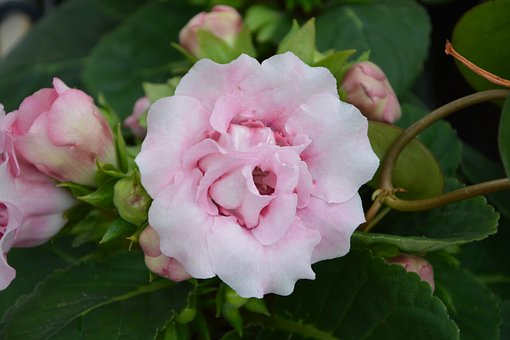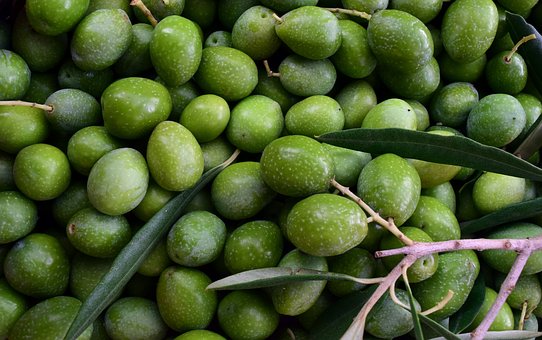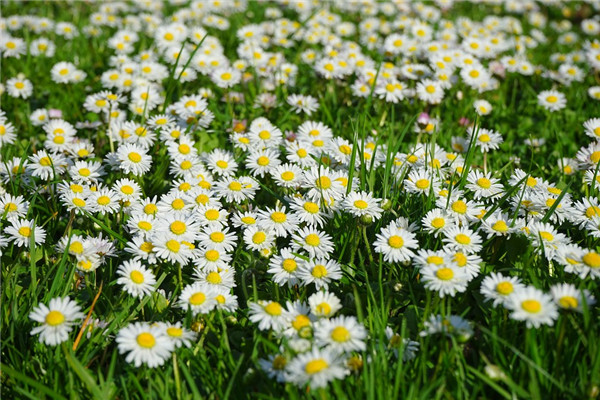How much is a bag of paulownia seeds? How do you plant it? When will it blossom after planting? How to cut off the head after blooming? (with culture
Big rock tung, also known as six snow, snow mud, is a common kind of big rock tung perennial herbs in our country, because of the rich and gorgeous color, and beautiful flower posture and deeply loved by flower friends, how much is a bag of big rock tung seeds? How? When do they bloom after planting? How to cut off the head after flowering?

Seed Price:
Great rock tung seeds are generally purchased in small bags, a small bag of about 10 or 20 seeds, 10 seeds a bag price is about 5 yuan, 20 seeds is about 10 yuan, the general flower market or online have to buy.
How?
1. Seed selection
If you want to bloom more, in the selection of seeds, we should import hybrid varieties with luxuriant flowering, short plant type, strong resistance and easy maintenance. Single-petal varieties bloom more than double-petal varieties.
2. Seed acquisition
Self-pollination of Pittosporum gloeosporium is difficult. In order to obtain good seeds, artificial pollination is necessary. The pollen of stamen is collected at flowering stage of pittosporum, and the stigma of pistil is painted with writing brush. About 35 days after pollination, the seeds will mature, and the seeds will be removed and stored in the sun.
3. Sowing method
Before sowing, soak the seeds in water for 24 hours to promote early germination. Pot soil with the best choice of rotten leaf soil, vegetable soil and fine sand mixed culture soil. After leveling the soil, evenly sprinkle seeds, soak the basin in shallow water, take it out, cover it with glass, place it in semi-shade, and keep the humidity condition of 18-20℃. About 10 days can emerge, then let the pittosporum gradually see the sun, but to avoid direct sunlight, often spray, maintain humidity, every 10 days or so apply a thin cake fertilizer water, generally about 6 months after sowing can bloom.
Time of flowering:
The flowers of pittosporum are terminal or axillary on the branches, and the corolla is bell-shaped; the flowering period is between April and November, and the flowering period is relatively long. The color of its flowers are pink, red, purple blue, white, compound color and many other colors and large flowers, a large pittosporum can bloom dozens of flowers, it is a toppling city. A single pittosporum plant can bloom dozens of flowers, flowering from April to November, and flowering lasts for several months. But it blooms once a year.
How to cut off the head after flowering?
After general globetree blossoms, the bottom will also send out a lot of new buds. We must pay attention to these new buds when beheading. If there is no new bud, don't behead easily, otherwise it will be difficult to recover.
There are actually two ways to cut off the head after the flowering of the pittosporum, one is to cut off the head, a little more ruthless, and the other is to pinch off the old pedicel.
Two methods can be used, flower friends choose, if beheading is best to find a sunny day after the flowers are completely bloomed, at least 1 pair of leaves should be left, and it is good to leave 1-2 cm stems. After beheading, 3 or 5 days do not need watering to avoid wound infection leading to rotten balls. If there is no new bud, beheading will generally germinate again within ten days, and flowering can be done in about 2-3 months. The cut leaves can be inserted.
Whether it is the original bud at the bottom, or the new bud after beheading, if not for reproduction, only one bud can be left in the buds, and the weak bud can be removed, which is conducive to the concentration of nutrients, and the flowers bloom more and more plump.
Breeding methods:
1, soil: pittosporum like loose, fertile and well-preserved humus soil, suitable for cultivation with rich humus, loose slightly acidic soil, commonly used 1 part pearlite, 1 part river sand and 3 parts rotten leaf soil plus a small amount of decomposed, dried fine poultry manure preparation, potted pittosporum commonly used rotten leaf soil, coarse sand and vermiculite mixed matrix.
2. Temperature: The suitable temperature for growth of pittosporum is 10~25℃. Different seasons have different requirements, January to October is 18~25℃, October to January of the second year 10~12℃. Suitable temperature, can make leaves grow luxuriant, green, flowers large and bright. When the plants are withered and dormant, the bulbs are removed and stored in slightly moist sand.
3, light: pittosporum is a semi-positive plant, usually to properly shade, avoid direct light. Winter seedling stage should be sunny, summer must be placed in a ventilated, with scattered light in the shade carefully maintained, growth period light should not be too strong, flowering appropriate to extend the shade time, winter dormant period pot soil should be properly kept a little dry.
4, watering: pittosporum flowers, leaves have fluff, once stained with water droplets, it is easy to rot, so avoid spraying water on flowers and leaves. It is best to water with immersion. Usually watering should be appropriate, too much easily cause tuber rot, leaf withered, or even the whole plant death. During the summer high temperature stage, water 1~2 times a day, and avoid rain during flowering.
5. Fertilization: apply decomposed thin organic liquid fertilizer once a week from leaf exhibition to flowering. After flower bud formation, apply phosphorus fertilizer. Do not contaminate leaf surface. Spray clean water once after each fertilization. Apply thin cake fertilizer once every 10~15 days from leaf extension to flowering. Apply bone meal or calcium superphosphate once more when flower bud formation occurs.
6. Pest infestation: It is easy to cause leaf snail pests in the breeding process, which mainly harm the roots, stems and leaves of Pittosporum, causing the leaves to yellow and fall off, which will lead to death in serious cases. When red spiders are found on the leaves, 5% Nisolon emulsion can be sprayed 1000 times, and the control effect is very good. Generally spray once every week, continuously spray 2~3 times.
Time: 2019-04-09 Click:
- Prev

How much is the market price of tree plant olive per jin? When will it be ready for market? Which areas are suitable for planting? What?
Olive, also known as yellow olive, green fruit, mountain olive, white olive, red olive, green fruit, remonstrance fruit, loyal fruit, is a common tree plant in southern China. Causal, nuclear and tree are widely cultivated because of their high economic value, among which olive oil has the highest value.
- Next

How much is the perennial herb chrysanthemum seed per jin? How do you plant it? How long will it blossom?
Chrysanthemum, also known as Huang Hua, Jin Ying, Tao Ju, etc., is a common perennial herb in China. It is cultivated because of its high ornamental and medicinal value. How much is the chrysanthemum seed? How do you plant it? How long will it blossom? Seed price: the price of chrysanthemum seed is about 40-50 yuan per jin.
Related
- Fuxing push coffee new agricultural production and marketing class: lack of small-scale processing plants
- Jujube rice field leisure farm deep ploughing Yilan for five years to create a space for organic food and play
- Nongyu Farm-A trial of organic papaya for brave women with advanced technology
- Four points for attention in the prevention and control of diseases and insect pests of edible fungi
- How to add nutrient solution to Edible Fungi
- Is there any good way to control edible fungus mites?
- Open Inoculation Technology of Edible Fungi
- Is there any clever way to use fertilizer for edible fungus in winter?
- What agents are used to kill the pathogens of edible fungi in the mushroom shed?
- Rapid drying of Edible Fungi

